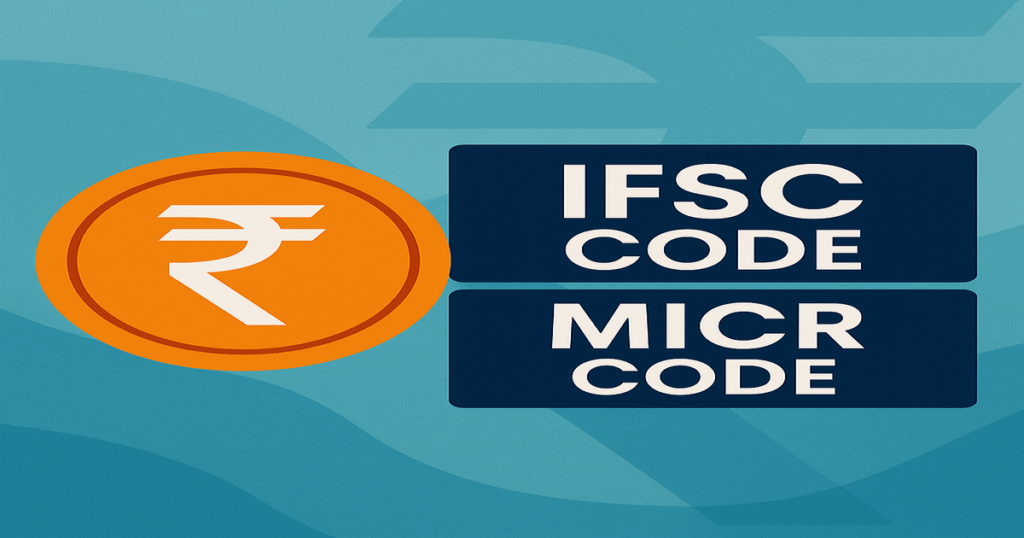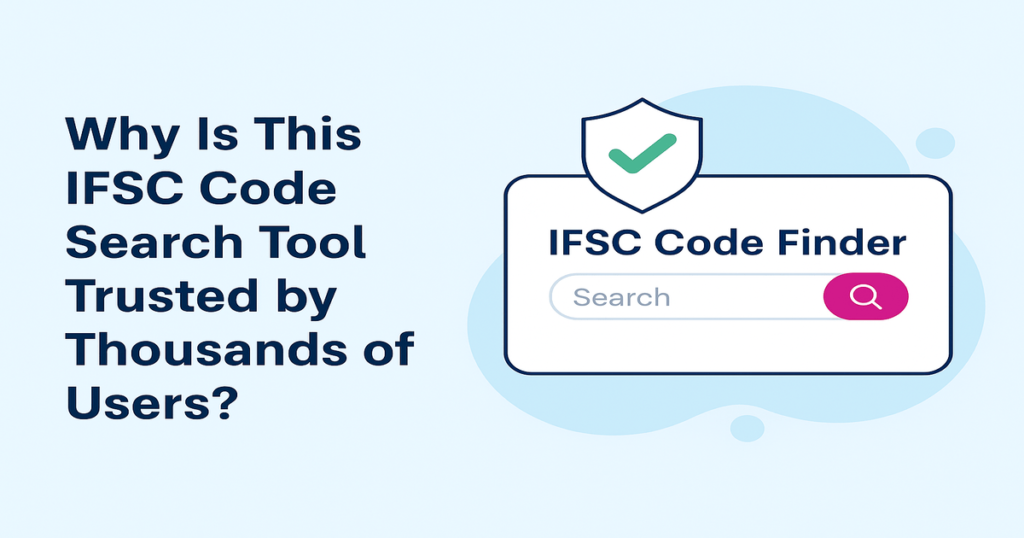Have you ever tried to send money online and been asked for something called an “IFSC Code”? If yes, you’re not alone. The Indian Financial System Code (IFSC) is a key part of online banking in India and plays a crucial role in electronic fund transfers. Whether you’re sending money via NEFT, RTGS, or IMPS, you cannot proceed without it.
In this detailed guide for 2025, we’ll explore everything you need to know about IFSC codes—how they work, why they’re important, where to find them, and how to avoid errors when using them.
➡️ Try our Free IFSC Code Finder Tool today.
What is an IFSC Code?
IFSC Code stands for Indian Financial System Code. It is an 11-character alphanumeric code that uniquely identifies a specific bank branch in India. It is issued by the Reserve Bank of India (RBI) and is mandatory for processing any digital payment through the banking system.
Structure of IFSC Code
An IFSC code is made up of:
- The first 4 characters: Represent the bank name (e.g., SBIN for SBI)
- The 5th character: Always zero (0), reserved for future use
- The last 6 characters: Represent the specific branch code
Example: SBIN0000234
- SBIN = State Bank of India
- 0 = Reserved
- 000234 = Branch code
Where is IFSC Code Used?
The IFSC code is mainly used in:
- ✅ NEFT (National Electronic Funds Transfer)
- ✅ RTGS (Real-Time Gross Settlement)
- ✅ IMPS (Immediate Payment Service)
- ✅ UPI-linked bank verification
- ✅ Online shopping refunds to bank accounts
- ✅ Tax refund settlements
- ✅ Loan EMI payments
Without an IFSC code, online transactions cannot be processed accurately.
How to Find the IFSC Code?
There are multiple ways to find the IFSC code of any bank branch:
- 📲 Using IFSC Code Search Tool
Use our IFSC Code Search Tool to easily find any IFSC code by selecting the bank, state, district, and branch. - 🧾 On Cheque Books & Passbooks
Every cheque leaf usually contains the IFSC code printed on the top or bottom left corner. - 🌐 On Bank’s Official Website
Visit the official website of the bank and navigate to their branch locator or IFSC search tool. - 🧠 Using RBI’s Website
The Reserve Bank of India maintains a list of all IFSC codes on their official website.
Why is IFSC Code Important?
- 🔄 Ensures secure and correct routing of funds
- ⚡️ Enables faster processing of digital payments
- 🔍 Helps identify the exact branch for fund credit
- 💸 Prevents delays or returns due to wrong branch selection
- ✅ Mandated by RBI for regulated online transactions
What Happens if You Use the Wrong IFSC Code?
Using an incorrect IFSC code can lead to:
- ❌ Failed transaction
- 🔁 Reversal of payment after delay
- 📞 Time-consuming manual intervention via bank
Although most systems verify IFSC before confirming, it’s best to always double-check.
How to Use IFSC Code in Online Transfer
🛠️ Here’s how to use it step-by-step:
- Login to your net banking or mobile banking app
- Select “Add Beneficiary” or “Fund Transfer”
- Enter Beneficiary Name, Account Number, IFSC Code, and Bank
- Verify details via OTP
- Initiate payment
✅ Done! Your funds will reach the correct account.
Is IFSC Code Used for International Transfers?
No, IFSC is applicable only for Indian bank-to-bank transfers. For international payments, you need:
- SWIFT Code
- IBAN (in some countries)
- BIC Code
However, for inward remittance into an Indian account, the IFSC code may still be required by some platforms.
Difference Between IFSC, SWIFT, MICR, and UPI
| Term | Used For | Code Format |
|---|---|---|
| IFSC | Domestic fund transfer | 11-character |
| SWIFT | International fund transfer | 8-11 character |
| MICR | Cheque processing | 9-digit number |
| UPI ID | Instant mobile payments | Email-like ID |
How Our IFSC Code Search Tool Helps You
Our tool is designed to be:
- 🔍 Accurate: Data sourced from reliable and updated JSON files
- ⚡ Fast: Lightning-fast dropdown search system
- 📱 Mobile-Friendly: Works great on smartphones
- 📄 Exportable: Allows printing and PDF download of branch details
- 🔒 Safe: No personal info required
IFSC codes may seem technical, but they are a critical part of modern banking. As digital banking continues to evolve in 2025, understanding the role of the IFSC code can make your transactions faster, safer, and smarter.
If you want a reliable way to search for IFSC codes of any bank, visit https://ifsc-code-search.site—your one-stop solution for fast, secure, and user-friendly IFSC code lookup.
➡️ Try our Free IFSC Code Finder Tool today.
Frequently Asked Questions (FAQs)
Q1. What does IFSC stand for?
IFSC stands for Indian Financial System Code. It is an 11-character alphanumeric code used to uniquely identify bank branches in India for electronic payment systems like NEFT, RTGS, and IMPS.
Q2. Why is an IFSC code important?
The IFSC code ensures that your money reaches the correct bank branch during electronic transactions. Without it, digital payments like NEFT or RTGS cannot be processed.
Q3. Where can I find my bank’s IFSC code?
You can find the IFSC code on your cheque book, bank passbook, or by using IFSC code search tools online. It’s also available on the RBI’s official website.
Q4. Is the IFSC code the same for all branches of a bank?
No, each branch of a bank has a unique IFSC code. Even branches of the same bank in different locations will have different codes.
Q5. Can I use an old IFSC code if the branch is merged?
No. In case of bank mergers or branch changes, the IFSC code might be updated. Always confirm the current code through official or updated sources.
💡 See Also: Best IFSC Code Search Tool in 2025

